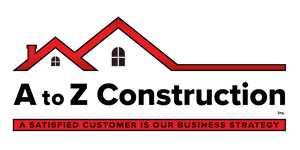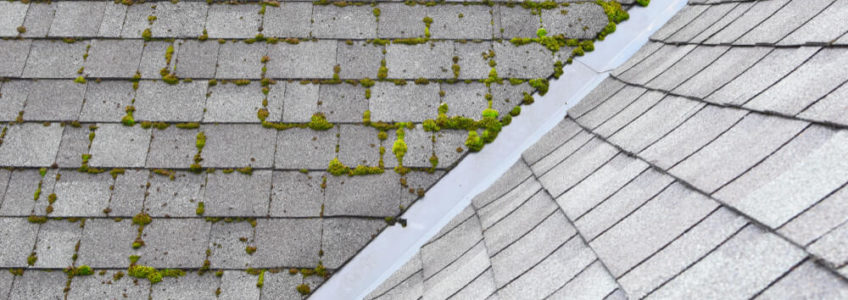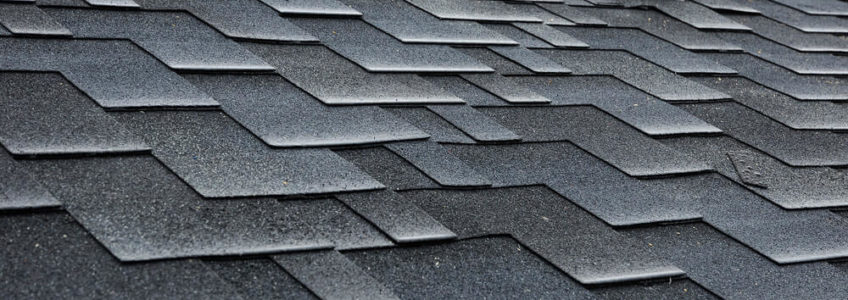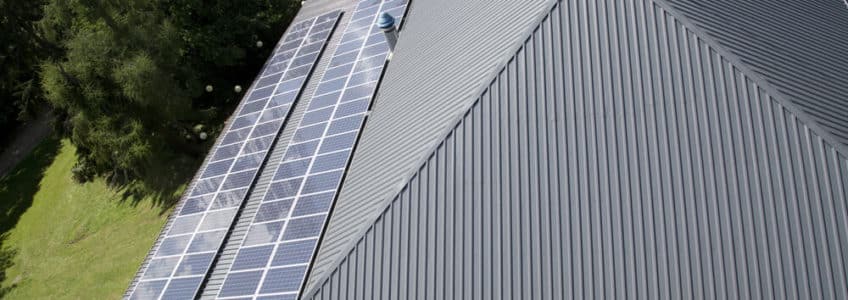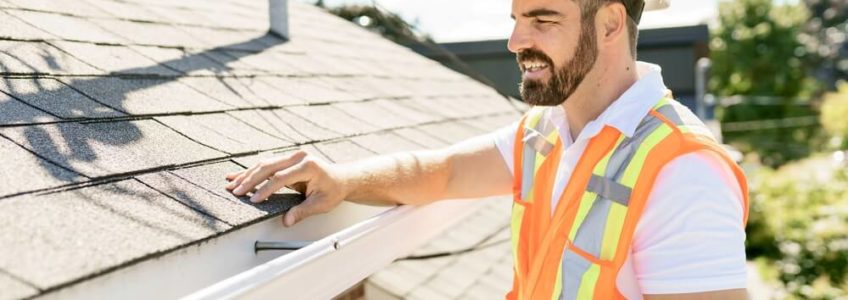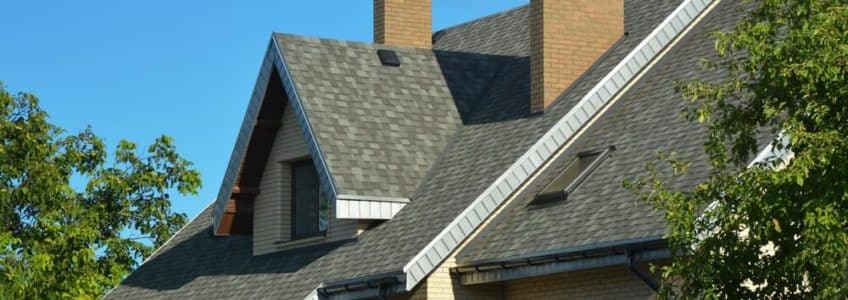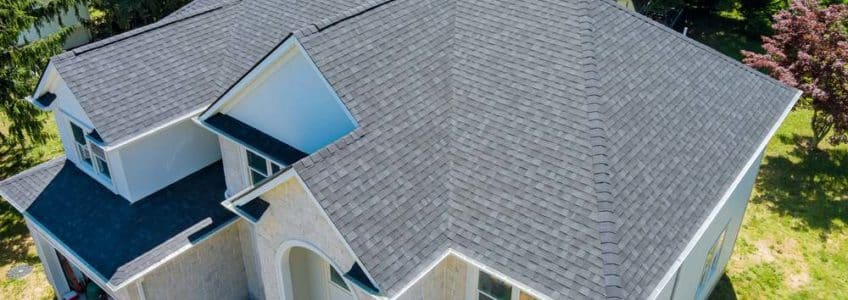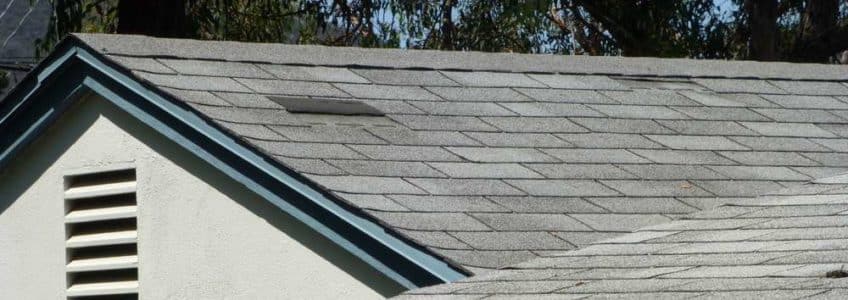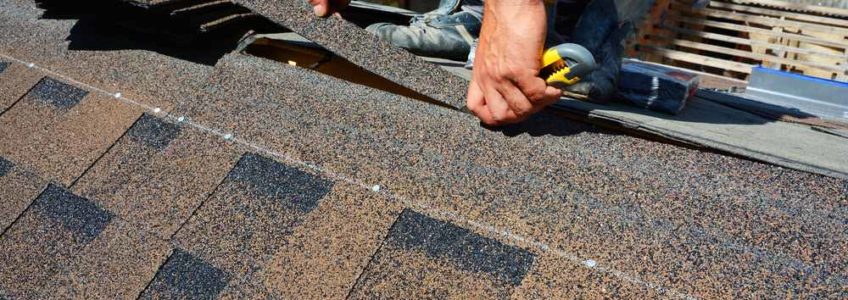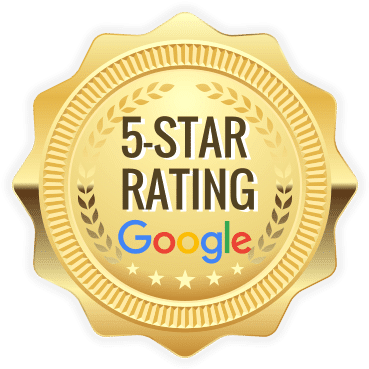How to Determine the Age of Your Roof
What is your home’s roof age? Most new homeowners don’t know or try to inquire about the age of their roofs until problems start to kick in.
When purchasing an older home, it’s paramount that you ask many questions concerning the house before moving in. It will help you know what to replace and what to repair. Also, you get to plan your finances well and prevent problems that may arise later.
How can I find out how old my roof is? If you don’t know the age of your roof, then you’re in the right place. Herein are several methods to determine your roof’s age.
How Can I Find Out How Old My Roof Is?
Your roof may have aged, but still, things appear normal. That’s why you shouldn’t depend on looks alone when determining the age of your home’s roof. But how can I find out how old my roof is?
Talk to Your New Neighbors
The first step regarding how to find roof age is engaging close neighbors. Neighbors have a lot of information that can turn helpful, especially if you’re still new in an area.
Be friendly to them and ask questions about your home. They may remember or estimate the year the roofing contractor installed your roof or give you information about the previous owner.
Also, if your area has several roofing contractors/professionals, your neighbor may know the exact one that worked on your roof. This information will save you the trouble of contacting all of them.
Try Contacting the Previous Owners
Take this route if you’re lucky enough to get the contacts of your home’s previous owners. Your real estate agent, neighbors, or a quick internet search can give you a list of all the people that occupied your house before. The previous homeowner might have valuable information on your roof’s age.
Hire a Professional for a Visual Examination and Age Estimation
Perhaps you can’t reach the previous owners, or you don’t have any close neighbors. If that’s the case, consider hiring a roofing professional who knows how to find roof age by examining your roof visually and making an estimation.
With their knowledge and several years of experience, roofers can tell when the roofing installation happened. The better if you can get hold of the roofer that worked on your house.
Obtaining a Copy of Your Home’s Building or Roofing Permit
Usually, when you want to construct a new building, you must file or apply for a building permit from the local government. This document is also a must-have when making significant modifications to an existing house, like replacing your roof. It will help you determine the exact roof age of your house.
Your Local Roofing Company Can Help
Roofing companies have professionals who can inspect and provide estimates at a fee. You can use your local roofing company for the same, especially when you suspect that the roof could be up for replacement.
Chances are that your local roofing company provided the materials for the installation or last replacement. If so, they can provide you with copies of the receipts.
Why Is it Important to Know Your Home’s Roof Age?
Knowing your house’s roof age is essential since it will help you plan your expenses well. Doing so is necessary before moving to a new home. You want to know when you’ll need a new roof or if you should repair the existing roof.
Roof replacement can be costly if you don’t plan your finances. But if you know the roof’s age, you can plan your finances and shop for long-lasting roofing materials ahead of time. Asphalt Shingles, for instance, can last up to 30 years with proper care and maintenance.
Visual Signs of an Aged Roof
The above methods on how to find roof age can be long and tiring. Fortunately, there are visual signs that indicate your roof is old.
Water Damage and Leaks
Water damage around ceilings, chimneys, and corners of the house gives an impression there’s something wrong with roofing shingles. It could be that shingles are missing or damaged, perhaps due to wear and tear over time or harsh weather conditions. Obvious leaks happen during rainy seasons, so you may want to wait for the rains before moving in.
Curled Shingles
Shingles curling is an obvious sign you need roofing replacement. Shingles may curl due to many factors, including age, strong winds, or poor ventilation. Depending on the severity of the curling, you may have a few years left to plan your roof’s replacement.
Roof Decay or Rot
During rainy seasons, roofs experience excessive water runoff. If neglected, accumulation of water could lead to roof decay or rot. Consider hiring a professional at least once per year to inspect your roof.
Cracked Shingles
If your shingles are cracked, it’s time to call a roofing contractor for replacement.
Enlist a Roofing Expert
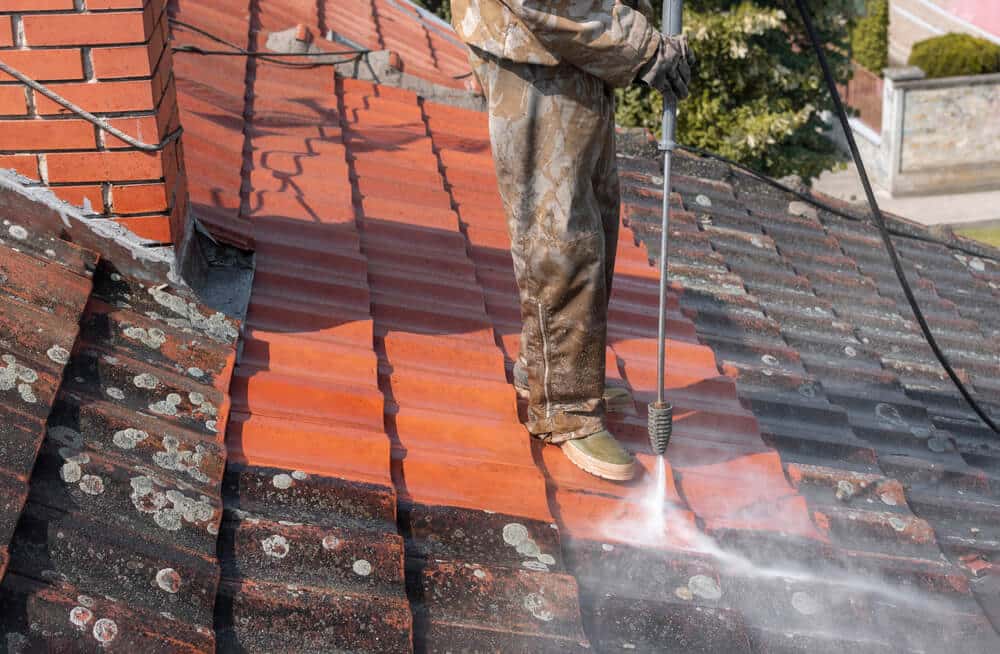
If you’re planning to purchase an old home, how to find its roof age is among the many things you should consider. Do whatever it takes to get the year the roofing installation happened. Talk to your neighbors, track down the previous owners if you have to, or get a copy of the building permit.
But why go through these processes? You can easily get expert opinions on your roof’s age by working with trusted roofing specialists. Contact A to Z Construction today for roof inspection services.
How Long Does an Asphalt Shingle Roof Last
Homeowners have several options for roofing their homes, and asphalt shingle roofs remain one of the most popular choices because of their durability and value. Considering how expensive a roof replacement is, you must select quality roofing materials and care for your roof to maximize its lifespan.
Today, we’ll cover all your asphalt roofing questions, like knowing when your roof has reached the end of its lifespan, factors that affect a roof’s lifespan, and how long an asphalt roof lasts.
Typical Lifespan of an Asphalt Shingle Roof
Asphalt shingles are an excellent roofing material because they offer a blend of value, durability, and a variety of other benefits. The question of how long does an asphalt roof last will have varied answers depending on the style and quality of the roofing material used. Most asphalt roofing has a typical lifespan of 25-30 years.
Asphalt shingles are available in 3-tab, dimension, and luxury varieties. Depending on your preferred style and budget, you may find that one type of shingle is the best fit for you. Let’s take a look below:
- 3-tab: 3-tab shingles get their name from the three tabs on each shingle. These shingles lay flat on the roof and typically carry a manufacturer’s warranty of 25 years. Of the three shingle types, 3-tab shingles are the plainest looking and most affordable.
- Dimensional: Dimensional shingles have a three-dimensional appearance that replicates the look of a cedar shake roof. Dimensional shingles are about 15-20% more expensive than 3-tab shingles, and they typically carry a warranty of 30 years.
- Luxury: Luxury shingles are the most beautiful-looking asphalt roof materials, costing about double the price of a dimensional shingle. Luxury shingles carry a warranty of 30 years, with the opportunity to extend the warranty in certain situations to 50 years.
Regardless of the warranty length, most asphalt shingles fall short of their warranty period because of environmental factors, storm damage, and natural wear. Most shingles deliver between 80-90% of their warranted lifespan. You can expect to get about 20-22 years out of a 3-tab shingle room and about 25-28 years from a dimensional or luxury roof.
Factors Affecting the Lifespan of Asphalt Shingle Roofing
When it comes to the question of how long does an asphalt roof last, several factors can influence how long your new roof will last.
Attic Ventilation
Improper attic ventilation is one of the leading causes of roof degradation, and if your attic isn’t ventilated properly, you could be taking years off the lifespan of your roof.
Without proper ventilation, your attic will be freezing in the winter, which can cause roofing material to crack. During the warmer months, the attic becomes extremely hot and will burn up your roofing system over time.
Not only will poor ventilation cut down the life of your roof, but it will also void the roof’s warranty, so you have no recourse to recoup money on a roof replacement.
House Location
Where your house is located is also a contributing factor to your roof’s lifespan. Homes that receive significant direct sunlight will have a shorter roof lifespan than those with shaded roofs. If you’re in an area with extreme weather, you can expect these events to lower the lifespan of your roof. Extreme weather includes, but is not limited to:
- Blizzards
- Hail
- Severe thunderstorms
- Hurricanes
- Tornados
Pitch of Your Roof
Your roof’s pitch can also impact the lifespan of your asphalt shingles. Roofs with a low pitch will allow rain or snow from storms to accumulate on the roof, leading to mold, mildew, and rot. Higher-pitched roofs enable excess water to run off efficiently, contributing to a longer shingle lifespan.
Lack of Maintenance
While asphalt shingles require little maintenance compared to other roofing materials, not taking care of occasional essential maintenance can cost you several years of life for your roof shingles.
You should inspect your roof bi-annually, ensuring that debris, leaves, and ice dams are removed, and any missing or damaged shingles are replaced. Trimming any overhanging branches that could fall onto your roof and cause damage during a storm is also wise.
Pay special attention to areas where flashing is used to ensure it’s still adequately waterproof. Cracked or missing flashing and moss growth are telltale signs that your roof flashing has been compromised.
Your Roofing Contractor
The installation of the roofing system, flashing, and shingles are critical to the longevity of your roof. Even the highest quality materials will be compromised if a contractor installs them poorly or incorrectly, and you must take great care throughout the process to ensure a long-lasting roof.
How to Appraise Your Roof’s Condition
As a homeowner, there are several things you can do to evaluate the condition of your asphalt shingles.
The most obvious signs that your roof is reaching the end of its lifespan can typically be seen from the sidewalk. Look for cupped shingles, curled edges, or shingles missing a significant amount of granules. Shingles that show cracking or staining are also common indicators that you may need a roof replacement soon.
It’s common for moss to grow on asphalt shingles that don’t receive much sunlight. Moss can trap moisture inside the shingles, which can cause damage if left unchecked, and it can also be challenging to remove moss without damaging the granules on the shingles. You may consider cleaning it professionally if you have significant moss growth on your roof.
When removing the moss will damage the shingle below, you should consider replacing the affected shingles.
Keep an eye on what your neighbors are doing with their homes. Most of the houses on your block were built around the same time. If they’re beginning to replace their roofing, your roof may require replacement soon.
How Long Does an Asphalt Shingle Roof Last: When to Seek a Replacement
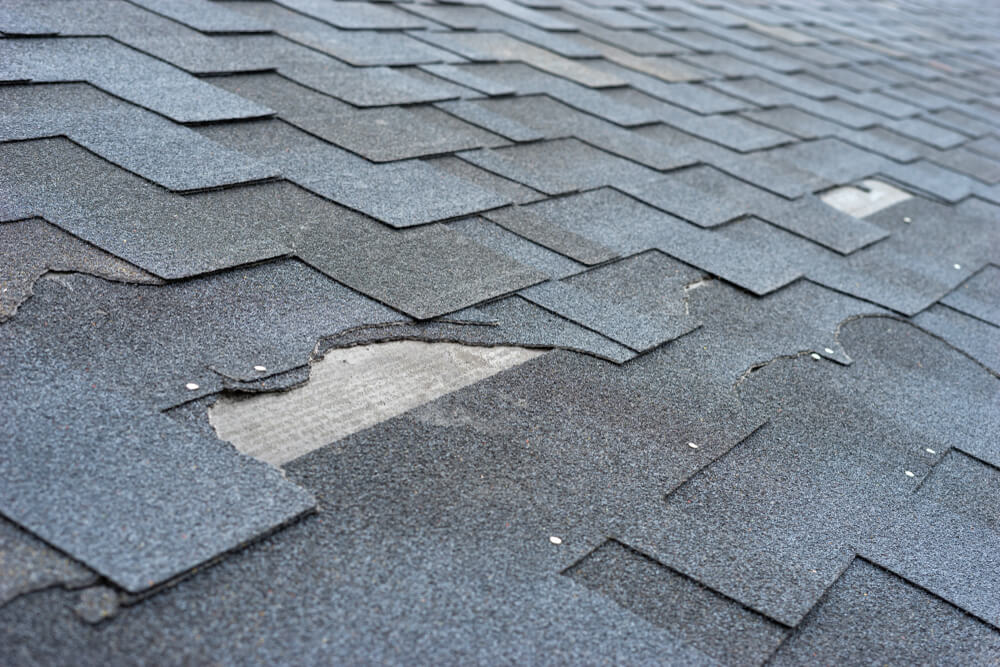
If an appraisal of your roof reveals that it’s time to replace your roof, you must work with a trusted roofing contractor that can deliver excellent craftsmanship and cutting-edge solutions to your roofing needs.
With nearly two decades of experience, A to Z Construction is one of Minnesota’s finest commercial and residential roofing specialists. Our dedicated team specializes in complete roofing systems, replacements, and repairs, and we can help answer the question of how long does an asphalt roof last. Contact us today!
How Long Does a Metal Roof Last?
Roofing is crucial and one of the last steps in building or renovating a house. That’s why it’s advisable to pick a suitable roofing material that guarantees longevity and will upgrade your home’s value and style. For most Minnesota homeowners, metal roofing is the go-to option, courtesy of its various selling points, but how long does a metal roof last?
Most metal roofs are sturdy and will serve you for a decent time before you consider repairs or replacements. Here is a detailed guide on the longevity of metal roofs and what makes them the best option for your house.
How Long Does a Metal Roof Last?
When picking a suitable roof for your house, the material’s durability should be a primary factor when determining how long a metal roof lasts. Luckily, you get this with metal roofs. These roofs are long-lasting, with a life expectancy of 20-70 years. With a metal roof, you don’t have to climb up your house regularly with your hammer for repairs.
Metal roofing features elements like copper, zinc, and steel alloys, which are more resilient to the elements. However, metal roofs can last for many years on their own, but with modifications—like painting—their functionality improves.
How long does paint last on a metal roof? High-grade paint can have your back for up to 10 years.
The Life Expectancy Factors Affecting How Long a Metal Roof Lasts
So, how long will a metal roof last? There are several things that may increase or decrease its lifespan. Below are some of the factors that can affect metal roof life expectancy:
Weather Conditions
Weather conditions will affect how long a metal roof will last. Roofs act like shields over our heads and bear the brunt of weather conditions, and metal roofs fare well in mild and stable conditions. However, their lifespan could deteriorate in extreme or fluctuating conditions.
In hot climates, excessive heat and wind can cause wear and tear on these roofs. The heat causes metal to expand, while wind may carry items like sand that may erode the surface. Despite a metal roof’s resiliency, exposure to such conditions can shave some years off their lives.
Fluctuating conditions, like heat and cold spells, lead to rift development on the metal surface due to irregular contraction and expansion. The rifts may grow into cracks, prompting a quick fix, depending on how bad the situation is.
Metal Quality
Product quality is a critical factor when shopping for metal roofs and how long a metal roof will last. You judge quality by looking at the nature of construction. Thin and poorly crafted roofs perform poorly and may crack in a few years. While they may be cheap, light metal roofs don’t offer the best value.
Painted roofs are great, as they are sturdier against rusting and the effects of heat, and therefore, they can last longer. Stainless steel and alloy roofing products are also rustproof, though they tend to be pricey.
Installation
How long a metal roof lasts also depends on whether or not the roof is properly installed. Installing a metal roof is hassle-free, especially for an experienced hand. If you are not good at roofing, hire our professionals for well-done work.
Poor roofing practices may lead to cracks and leaks, which lessen the roof’s life. After installation, regular checkups are a must to ensure everything is alright.
Additionally, be aware of the roof’s slope. Low slopes can hold more water and weaken the roof over time, Whereas a sharp slope makes sure that rainwater does not accumulate. Focusing on the roof slope when designing your house helps to avoid potential water damage that might occur with a low roof.
How Metal Roofs Compare to Other Materials
How durable are metal roofs? To answer this question, you must look at how it fares against other roofing materials.
Another popular roofing material used when building homes are asphalt shingles. This roofing type is often inexpensive and relatively easy to install, even if you lack experience. Plus, they are also ideal for low-sloped roofs.
Shingles have a 30-40-year service life, which is not bad compared to metal roofs. However, the negative aspects of rolled roofing are that it has a short lifespan of only 8-10 years and it does not have a high aesthetic value. This means that asphalt shingles need consistent care and maintenance, lest their service life drops by several years.
Some construction experts advise using metal roofing over shingles to improve metal roof life expectancy. It is an excellent mode of roofing, where you use a steel shingle system over the asphalt, with the latter material acting as insulation and water protection. Should you decide to go with this roofing, have a professional guide you.
Metal Roofs for Cold Climates
If you live in colder climates, you understand the necessity of installing the proper roofing material to shield you from extreme temperatures. Metal roofs perform well in cold temperatures, with their durability being a crucial factor. Many families in Minnesota are upgrading to metal roofs to withstand the cold and snowy climate.
Why? Snow easily slides off metal roofs, so you don’t have to deal with the physical task of clearing your roof off. With less snow on your roof, you do not have to worry about snow dams, which can cause water damage.
Installing a metal roof means you don’t have to worry about constant upgrades, which can be strenuous both physically and financially.
How to Improve Your Metal Roof’s Lifespan
These are the following measures you can employ to extend your metal roof’s life expectancy:
- Clear debris from the roof and gutters to prevent ice dams
- Trim the trees around your house and clear branches hanging over the roof
- Paint your roof after ten years to make it sturdier and rustproof
- Proper attic ventilation for ample air circulation
- An annual roof inspection by qualified personnel
Turn to A to Z Construction for Your Roofing Needs
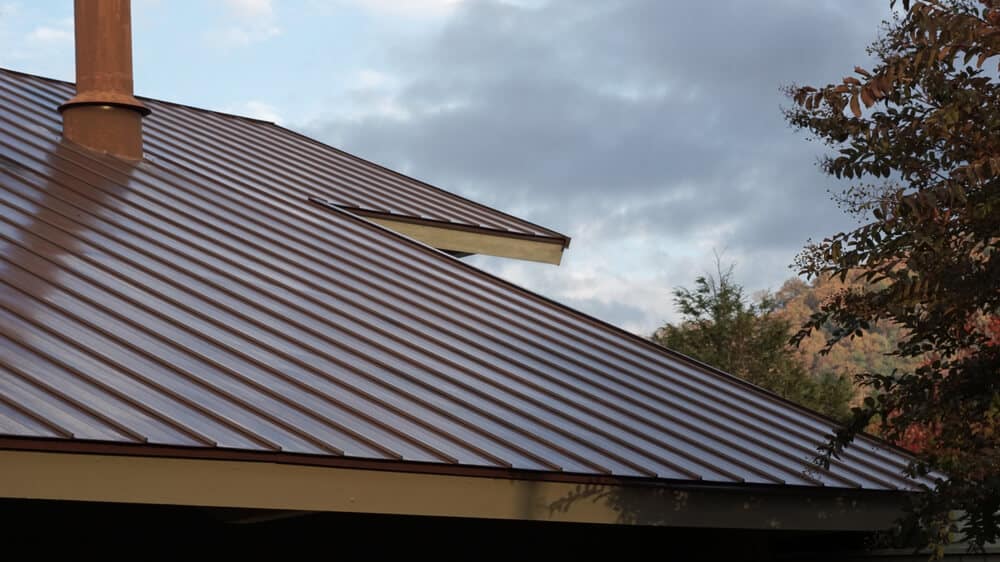
How long does a metal roof last? A properly installed metal roof can last up to 70 years. Metal is an ideal roofing material, with boasting attributes like stylishness, convenience, and durability.
Metal roofing is ideal for cold areas, like Minnesota, making it easier to deal with the colder climate and snow. Be sure to remember to conduct regular inspections on your metal roof to ensure it lives up to its standards.
If you are considering installing a metal roof, contact us today to learn more about your metal roofing options and your project’s possibilities. Our team of experts are professionally trained and will make sure to install a quality metal roof.
Should You Repair or Replace Your Roof?
A roof can last decades. Unfortunately, problems could happen at any moment, which means it might be time for a roof repair or replacement.
Repairing a roof is the cheaper option but not always the right choice when deciding between roof repair or replacement. Sometimes the damage to your home is too devastating, or it’s time to upgrade its appearance. A new roof installation is the best way to resolve these situations.
As a homeowner, should you repair or replace your roof? Below, we’ll cover everything you need to know before you repair or replace a roof.
Signs You Need Roof Repair or Replacement
Is it time to repair or replace roof shingles? Here are factors to consider when deciding between roof repair or replacement.
Age of Roof
The average lifespan of a roof ranges from 25 to 50 years. Should you repair or replace your roof? If your roof is reaching this age or you’re nearing the end of its warranty, you’ll want to consider roof repair or replacement.
Roof Leaks
A leaky roof is dangerous and can ruin your home, so should you repair or replace your roof? It’s also a health hazard as mold and mildew can grow. From water stains on your ceiling to damaged insulation, a leaky roof needs roof repairs as soon as possible.
While contractors can fix small leaks and damage, large leaks may require a new roof replacement. Ask your trusted contractor which is better for your leak: roof repair or replacement.
Roof Damage
Whether you are missing a few shingles or a tree damaged your roof, you need to repair or replace your roof quickly. Here are some different types of damage to keep on the lookout for when you’re deciding between roof repair or replacement:
Aesthetic Roof Damage
Aesthetic roof damage is damage that does not affect the functionality of a roof. Hail damage, missing shingles, or worn-out shingles are common aesthetic roof problems. Contractors can easily repair aesthetic damage without replacing a roof.
Structural Roof Damage
Structural damage is damage that reduces the integrity of the roof. This type of damage is often caused by storms and is very serious. The more damage, the greater chance your roof needs a replacement as soon as possible.
Weather and Climate
Do you experience extreme weather in your hometown? If so, it’s better to seek storm damage roof repairs immediately after a storm to prevent leaks and structural damage to your home.
Hail storms, falling tree limbs, and extreme winds can devastate homes, and even a few missing shingles can grow into a major problem, so take that into consideration when discussing roof repair or replacement.
Roof Replacement Cost
Replacing a roof is always going to cost more than repairing a roof. But, if you continually repair your old worn-out roof, you might be wasting your money, so think carefully about the pros and cons concerning roof repair or replacement.
While purchasing a new roof does have more upfront costs, your home gets the protection it needs, and you’ll need minimal repairs for another 25-50 years.
How Long are You Planning to Stay in Your Home?
Are you planning to move soon but are stuck between whether you should repair or replace your roof? You can save money by repairing a roof instead of replacing it. However, if your roof is old, rundown, or has extensive damage, you might want to think about roof replacement to attract buyers.
Typically, if your roof is in a poor state, no matter how long you plan to stay, there’s little debate about whether to go for roof repair or replacement: choose replacement.
When to Get a Roof Repaired
When should you get your roof repaired instead of replaced? Homeowners should consider the cost of a new roof and how old their current roof is when picking between roof repair or replacement. After you have a budget, it’s time to evaluate your roof’s damage and see if it’s worth repairing or replacing.
If you’re really struggling to decide whether or not you need a roof replacement or repair, you may want to have a roofing inspection to understand the true state of your roof.
Roofs With Minor Damage
If a roof has minor damage, it’s normally best to repair the roof. Below are some of the most common reasons to repair a roof instead of replacing it.
- Light wind damage
- Missing, blistering, or torn shingles
- Moss or mold growth on the roof
- Damaged gutters
- Light hail damage
- Dented tiles or metal roofing components
Roofs With Moderate Damage
Roofs that received moderate damage can also be repaired. If the damage is concentrated on one area of the home, it may be cheaper to repair the damaged section instead of replacing the whole roof. However, if the damage is spread out across the whole roof and you’re picking between roof repair or replacement, it may be wiser to replace the roof entirely.
Cons of Roof Repairs
If you have an older roof, the contractors may find it difficult to color match your tiles. While this won’t harm the roof, it can ruin the appearance of your roof.
After several repairs, older roofs tend to look sloppy or pieced together. Additionally, the unevenness and color differences can affect the curb appeal of your home, so bear that in mind when choosing between roof repair or replacement.
When to Get a Roof Replaced
It can be challenging to know when to replace a roof. Other than damage, some homeowners replace their roofs to improve the home’s curb appeal and value. If you’re considering roof repair or replacement, you need to look at the following factors.
Moderate to Extreme Damage
Storm damage is one of the biggest reasons to replace a roof. Sometimes the damage to a roof is far beyond the point of repair. You’ll need to replace the roof instead.
Also, homeowners who don’t repair small repairs may soon find themselves needing a whole new roof. As more and more tiles are damaged, the roof can suffer structural damage that requires a new roof installation.
Aesthetics and Curb Appeal
A new roof can instantly upgrade the aesthetic and curb appeal of a home. Whether you want to change the color or style of your roof, a new roof is a perfect opportunity to improve the appearance of your home.
It Makes Selling a Home Easier
A brand new roof is one of the best ways to get buyers interested in your home. Unfortunately, new roofs are expensive and you may end up losing money by installing a new roof. According to a 2019 study, replacing a shingle roof before selling was only a 68.2% return on investment. Make sure to do your research before considering roof repair or replacement and talk to local real estate agents to learn more about your area.
New Roofs Are Highly Efficient
Are your energy bills through the roof? You may want to lean towards roof replacement when picking between roof repair or replacement. Modern roofing materials are highly energy efficient. New roofs are great at keeping heat out during the summer and in during the winter, and they can also reduce drafts in a home.
Switch to Solar Energy
Replacing a roof gives homeowners the perfect opportunity to switch to solar energy. Solar roofing lets homeowners save on their energy bills while building a sustainable future. Solar roofs also grant homeowners tax write-offs that can save them thousands of dollars as well.
Repair or Replace Your Roof With Us Today!
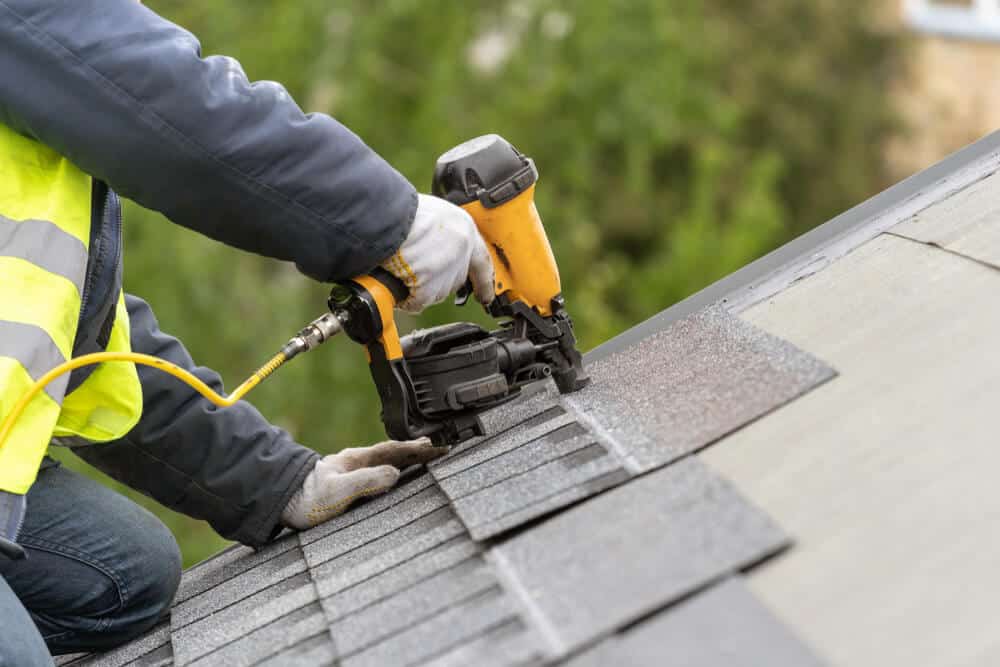
Are you ready to repair or replace your roof? The contractors at Perfect Exteriors are ready for the job. If you are ready to get started on your next roof repair or replacement project, then contact us today for a free estimate.
Metal vs. Asphalt Shingle Roof: Which Is Right For You
There are a lot of factors to consider when it comes to choosing the right roof for your home. Two of the most popular roofing materials are metal and asphalt shingles. So, how do you know which one is right for you?
It’s important to consider the differences between metal roofs vs shingles in terms of durability, longevity, and cost.
Keep reading to learn more about metal roof vs shingles to make the best decision for your home.
The Differences Between Metal Roofs vs Shingles
There are a few key differences to consider when it comes to metal or shingle roofs.
What Are Metal Roofs?
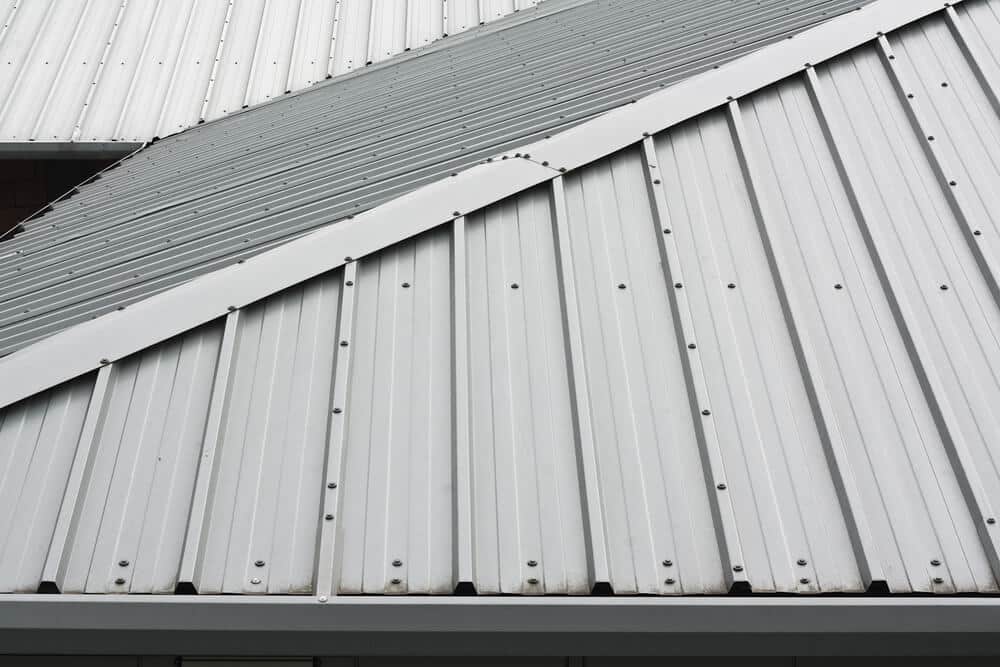
Metal roofs are a type of roofing made from metal panels or tiles. They are typically more expensive than other types of roofing, but they can last longer and be more durable. Metal roofs can also be recycled, which is good for the environment.
What Are Asphalt Shingles?
Asphalt shingles are made of a fiberglass mat covered with asphalt and ceramic granules. The granules protect the asphalt roof from UV damage and add color and texture to the shingle. Asphalt shingles are the most popular type of roofing in the United States and come in various colors and styles.
Which Roofing Material Is Right for You?
These are some of the key factors to consider when deciding between metal or shingle roofs.
Cost
So what’s the difference between the cost of metal roofs vs shingles?
Metal Roofs
Metal roofs are typically more expensive than shingle roofs. The initial cost of metal roofing can be anywhere from $8 to $16 per square foot, depending on the type of metal you choose.
For example, aluminum roofs are usually less expensive than copper roofs. While a metal roof may have a higher initial price tag than other roofing materials, it will more than pay for itself over time in terms of longevity and energy efficiency.
Metal roofs can last for decades with proper care and maintenance. Furthermore, they reflect heat rather than absorb it, helping keep your building cooler in summer and lowering energy bills. In short, a metal roof is a wise investment that will save you money in the long run.
Asphalt Shingle Roofs
The cost of metal roof vs shingles varies depending on the quality of the shingles. However, they are generally less expensive than metal roofs. Home Advisor reports that an asphalt shingle roof costs between $1,500 and $10,000.
This makes them a more budget-friendly option for many homeowners. However, it’s important to remember that asphalt shingles don’t last as long as metal roofs, so you may need to replace them more often.
Durability & Longevity
How long does a metal roof vs shingles last?
Metal Roofs
According to metal roofing experts, metal roofs can last up to 70 years or more with proper installation and maintenance.
They are also much more resistant to fire, wind, and hail damage than other types of roofing. And they are very low maintenance and rarely need repairs.
Asphalt Shingles
When properly installed, asphalt roofs can last 20 to 30 years. In fact, many manufacturers offer extended warranties of up to 50 years.
However, asphalt shingles are more susceptible to fire, wind, and hail damage than metal roofs. They also require more maintenance, such as cleaning and repairs.
Advantages and Disadvantages of a Metal Roof vs Shingles
Both metal and asphalt shingle roofs have their own advantages and disadvantages. Here’s a quick overview:
Advantages of Metal Roofs
- Metal roofs are more durable and have a longer lifespan than asphalt shingles
- They are more resistant to fire, wind, and hail damage
- Metal roofs are low maintenance and rarely need repairs
- They are 100% recyclable and good for the environment
Disadvantages of Metal Roofs
- Metal roofs are more expensive than asphalt roofs
- They can be noisy during rainstorms or hailstorms
- Metal roofs can suffer damage by falling tree limbs or other debris
- They may require special insulation to prevent condensation
Advantages of Asphalt Roof
- Asphalt shingles are less expensive than metal roofs
- They come in various colors and styles to match your home’s exterior
- Asphalt shingles are easy to install and repair
- They offer good insulation and can help keep your home cool in summer
Disadvantages of Asphalt Roof
- Asphalt shingles don’t last as long as metal roofs
- They are more susceptible to fire, wind, and hail damage
- Asphalt shingles require more maintenance, such as cleaning and repairs
- They can be difficult to remove and dispose of properly
Considerations When Choosing a Metal or Shingle Roof
When deciding between metal or shingle roofs, you should keep a few things in mind:
- The climate in your area: If you live in an area with severe weather conditions, such as high winds, hail, or hurricanes, metal roofs are a good option because they can withstand these conditions better than asphalt shingles.
- The slope of your roof: Metal roofs can be installed on any roof, but they work best on roofs with a slope of 3/12 or more. Asphalt shingles, on the other hand, can be installed on roofs with a shallower slope.
- The type of home: Metal roofs are a good choice for homes with a modern or contemporary design, whereas asphalt shingles are a better choice for homes with a more traditional design.
- Your budget: Although metal roofs are more expensive than asphalt shingles, they last longer and require less maintenance. They are a good investment in the long run.
Contact a Metal or Asphalt Shingle Roofing Expert Today
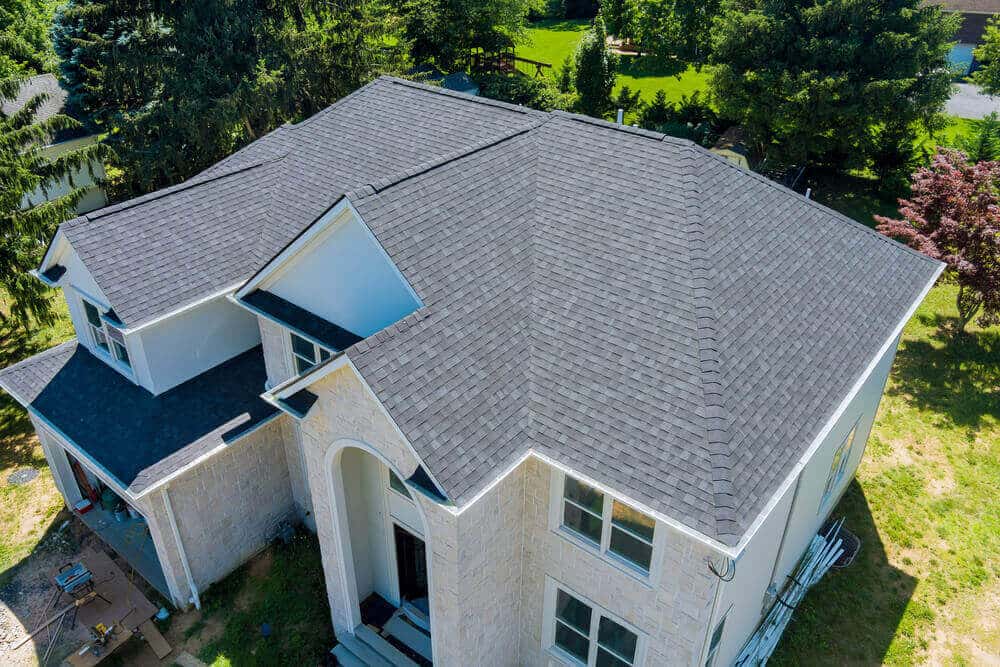
Both metal and shingle roofs have their pros and cons, so it’s important to consider your needs and budget when deciding which type of roof is right for your home.
If you’re still unsure which roofing material is right for your home, contact our metal roofing experts today. They will be able to help you choose the best roofing material for your home and provide a free estimate for a metal roof or shingles.
How Long Does a Roof Last in Minnesota
Minnesota is among the most vibrant and beautiful places to live in the United States. But it’s also home to a varied climate and occasional severe weather that can cause havoc to roofs, siding, and other parts of your home’s exterior.
Between hail, rain and snow, and high winds, Minnesota roofs have to endure some harsh conditions. Today, we’re going to examine the question of how long does a roof last in Minnesota and share some helpful advice to help you improve your roof lifespan.
Typical Roof Lifespan in Minnesota
There’s a myriad of factors that will influence the answer to how long does a roof last in Minnesota. The material the roof is made from significantly impacts the lifespan, along with various environmental conditions.
Metal, tile, or slate roofs have the most extended lifespan of roofing materials, and they commonly last 50 years or more. Wooden shake roofs reliably last for around 30 years, while fiber cement and asphalt shingles have the shortest lifespan, approximately 25 and 20 years, respectively.
Severe weather and environmental conditions will decrease the lifespan of any roof. Of course, if you’ve been searching online for “how long does a roof last in Minnesota,” you’ve likely dealt with your fair share of extreme weather.
If a roof in a more temperate climate is designed to last for 25 years, you can expect that same roof to have a lifespan of 18 to 22 years in Minnesota.
What Causes Roof Damage in Minnesota?
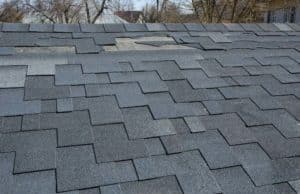
Living in Minnesota means your home has to withstand severe environmental conditions, which could adversely affect your roof lifespan. Here are the most significant contributing weather factors that can influence what answer you get to the question “how long does a roof last in Minnesota:”
- High winds: Strong gusts and wind storms can rip shingles from your roof, which invites more significant problems, such as leaks, to get through the missing shingles.
- Hail: Golf ball-sized hail can quickly cause damage to individual roof shingles.
- Freeze/thaw cycles: Cold winters and temperate summers can compromise your roofing material and shorten the roof’s lifespan.
Identifying Roof Damage
The best way to boost roof lifespan and ensure you get the best outcome to the query, “how long does a roof last in Minnesota?” is to occasionally inspect for evidence of damage, especially after the end of winter or a nasty storm. These are a few tell-tale signs of roof damage:
- Missing shingles
- Damaged shingles
- Roofing material in the gutters
- Stains from roof joists and decking
- Leaks
- Sunlight peeking through into the attic
When considering how long does a roof last in Minnesota, missing or damaged shingles are one of the most common culprits for a shorter lifespan in the state. High winds during severe storms can rip shingles from the roof, while large hail can damage individual shingles and lead to leaks.
With asphalt or cement shingle roofs, you might encounter roofing material in your gutters. If you see any debris, that’s a sign that your shingles are degrading and indicates a more significant problem.
If you notice staining on the roof in the shape of roof joists, your roof is likely reaching the end of its useful lifespan.
Leaks and sunlight peeking through in spots where it shouldn’t are typically the most extensive problems. These issues will lead to more significant leaks and won’t offer homeowners a favorable answer to the question, “how long does a roof last in Minnesota?”
How Often Should You Inspect Your Roof?
Roofing damage can happen at a moment’s notice, so Minnesota homeowners must be vigilant and monitor their roofs for signs of deterioration. If you don’t want to keep thinking about how long does a roof last in Minnesota, it’s a good idea to inspect your roof every six months.
As a rule of thumb, it’s best to look closely at your roof from the ground level. You should examine your gutters for indications that any roofing material has washed away.
You’ll want to perform a more thorough yearly assessment to ensure your roof is in top condition, so you’ll never be left wondering how long does a roof last in Minnesota.
Keep in mind that roofing is dangerous work, and you shouldn’t inspect the roof yourself unless you have experience working with roofing. You’ll need proper footwear and safety equipment, a quality ladder, and a spotter.
Catching roof damage early on can save you thousands of dollars in repair or replacement costs. If you don’t feel comfortable with the process, contact an experienced roofing contractor to assess the roof for you.
What Roofing Material Is Best for Minnesota Homes?
Even with an answer to “how long does a roof last in Minnesota,” homeowners may still be in the market for a roof replacement. If that’s the case, you’re likely looking for a roofing material that can deliver the most value and extended lifespan possible.
You’ll want to consider the pros and cons of all roofing materials to find the right match. For example, copper or metal roofs provide the longest lifespan but are also expensive and more challenging to maintain. Meanwhile, asphalt or cement roofs aren’t quite as durable, but they’re more affordable and easier to maintain.
The most important thing to remember as a Minnesota homeowner is to choose a trusted roofing contractor with the expertise needed to protect your family from harsh weather.
After all, the proper installation of underlayment, flashing, and roofing material is just as important as the material itself. It also goes a long way in determining the matter of how long a roof lasts in Minnesota.
Get Your Free Estimate Today With A to Z Construction
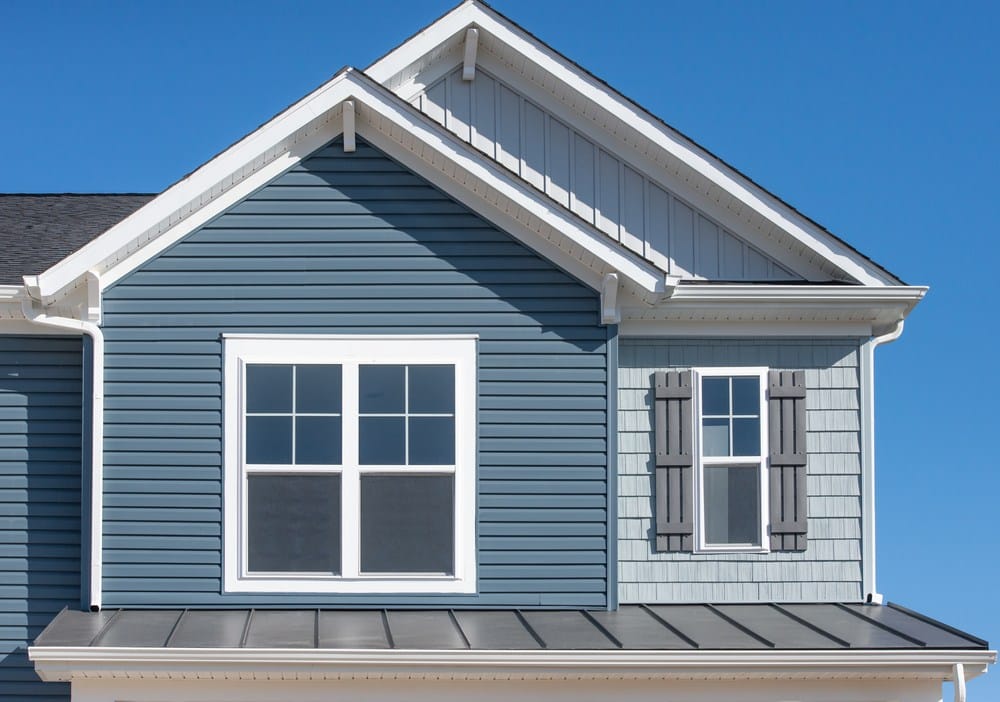
Minnesotans know too well how important it is to have a well-maintained, high-quality roof on their home. With that in mind, you need to know what signs of damage to look for and routinely inspect your roof to ensure it’s in good condition.
Now that you can answer the question of how long does a roof last in Minnesota, we encourage you to turn to us for all your roofing needs. Our seasoned professionals are on hand to give you trusted opinions if your roof is damaged or in disrepair. We’re ready to address whatever roofing issues your property might be experiencing. Contact A to Z Construction today to get your free roofing estimate.
Hail Roof Damage: Everything You Need to Know
Several factors influence roof hail damage. What size hail will damage a roof, how much hail damage will require you to replace a roof, and what hail damage looks like on a roof are essential questions for fixing and preventing roof hail damage. Here is everything you need to know about hail damage to a roof.
How Does Hail Damage Your Roof?
Hail damages your roof when it impacts the roof with a high enough intensity to cause dents, scratches, punctures, and loose or missing shingles. The roof hail damage will also vary depending on your roof’s material. However, never overlook roof hail damage, no matter what material your home has.
Asphalt shingle roofs have the longest lifespan but are middle-of-the-road when it comes to preventing hail damage to a roof. Shingles can be pitted, dented, scratched, cracked, and knocked loose. Asphalt shingles are the most common roofing material.
Clay shingles or tiles can shatter due to roof hail damage, while metal roofing may only dent thanks to hail damage to a roof. Wooden roofs can take the most roof hail damage but can take the least amount of damage from other weather conditions.
What Does Hail Damage Look Like on a Roof?
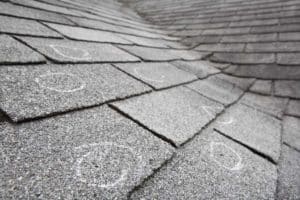
If you’ve never experienced a hail storm, you may ask, what does hail damage look like on a roof? Hail damage to a roof can look like “bruises” on shingles or can misalign shingles and tear them off. The bruises appear as cracks, fractures, dents, and missing chunks. They can be hard to spot but hail damage to a roof can lead to more significant problems if not solved.
So, what does hail damage look like on a roof? Typically, it looks like one of the following three things.
Cracks and Dents in Roof Hail Damage
Cracks from roof hail damage can look like thin slivers within your shingles and can change the shape of the remaining material. In severe hailstorms, your shingles can break entirely off, resulting in exposed fiberglass mats.
Dents typically come from larger hailstones and are less likely to occur in shingles than in other materials like sheeting, brick, or wood because shingles are more flexible. However, hail may have dented gutters, air vents, or other metal structures.
Exposed or Fractured Fiberglass Mats
If hail cracks the shingles enough to loosen them, the fiberglass mat underneath can become exposed. It’s easy to tell what an exposed mat looks like, but it can be harder to see a fractured one (especially if the shingle is still in place) from roof hail damage.
Exposed mats can lead to water accumulation under the shingles and are the perfect place for ice to form and pop your shingles off, causing roof hail damage. Fractured mats can have water seep through them and into your house, causing water damage to the wooden frame and ceilings.
Cosmetic Hail Damages to Roof
When it comes to cosmetic damage, what does hail damage look like on a roof? Hail damage to a roof mostly results in cosmetic damage that can lead to more significant issues if left untreated. For example, a dent or crack in a shingle won’t immediately be the end of your entire roof. How much hail damage you need to replace a roof can depend on the seriousness of the cosmetic damage, which can lead to permanent damage.
For example, a few cracks won’t ruin the entire roof within a day. However, if you never repair the cracked shingle, water can get into the roof and freeze, causing further cracks under and between the shingles.
If you notice damage on other parts of your roof, it’s a good idea to call us for a free inspection. This way, professionals can look for damage you may have missed when looking over your roof for hail damage.
What Size Hail Will Damage a Roof?
No two storms have the same-sized hailstones, and the different sizes can result in additional roof damage. But what size hail will damage a roof? Typically, hailstones range from the size of a pea to the size of a softball. What size hail will damage your roof? Anything larger than a grape will cause hail damage to a roof.
Smaller hailstones don’t typically have a high enough density to cause visible roof hail damage- though they may be the end of your flowerbeds. Hail larger than an inch can gain enough momentum through a strong wind to begin chipping away at bricks and shingles, causing roof hail damage.
When the wind picks up during a hailstorm, it doesn’t matter what size the hail is to damage your roof. Hailstones around two to four inches can impact your roof anywhere between 44 to 72 mph. Imagine a softball-sized hailstone with a higher density hitting your roof at 60 mph; this will cause significant hail damage to a roof.
So, what size hail will damage a roof? Typically, anything larger than an inch.
How Much Hail Damage To Replace a Roof?
How much hail damage to replace a roof? That depends on whether you want insurance to pay for it. Insurance companies offer different levels of coverage depending on where you live and the price of your deductible. Up here in Minnesota, it’s definitely part of your coverage. But how much damage is enough to qualify? How much hail damage to replace a roof?
In terms of hail damage to a roof, most insurance companies want to see seven to ten hail impact points that caused visual damage within a 10’ by 10’ square. However, if your roof has three to four punctures due to hail damage, you’re most likely covered for at least a partial repair.
Some insurance companies won’t cover cosmetic damages, which is why that free inspection is crucial. Having a professional company state that there’s physical damage to your roof is the first step to replacing it.
A professional appraisal can prove the damage is from hail, not from other situations like UV rays, branches, animals, or improper installation. So, how much hail damage to replace a roof? Typically about seven to ten points of impact per every ten square feet.
Have Hail Damage? Get Your Free Estimate Today
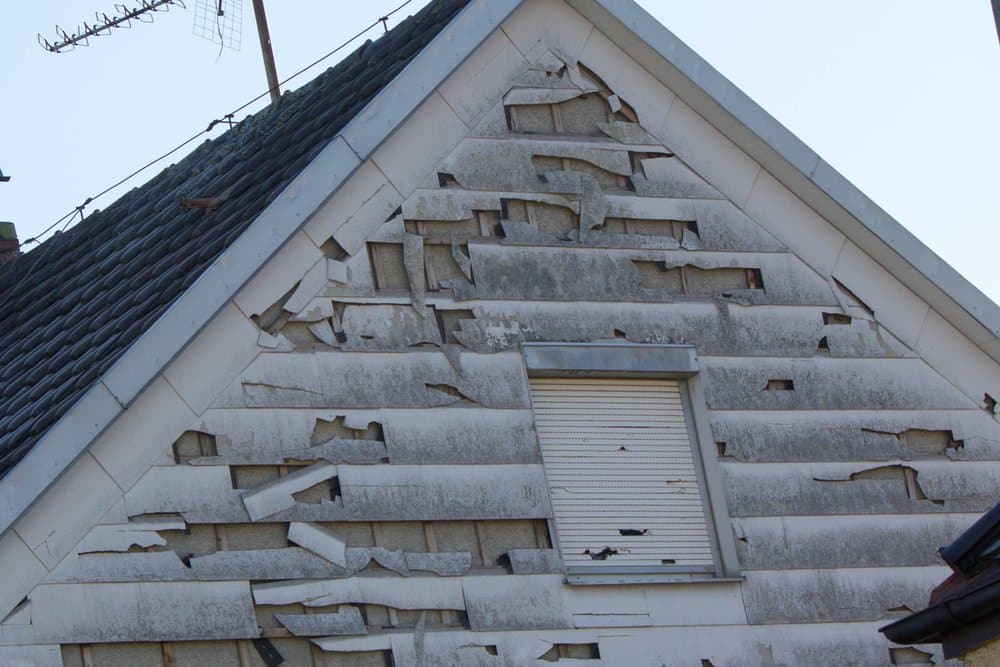
Your roof is built to protect your house, but sometimes mother nature can be a bit too much and cause hail damage to a roof. When looking for hail damage to your roof, check for dents, cracks, and granule loss on your shingles. Checking the gutters and air vents for hail damage to a roof is good for diagnosing the hail’s size.
Roof hail damage can be both cosmetic and extreme, meaning you’ll need someone to analyze the full depth of damage to your roof. Contact A to Z Construction today, and we’ll come out and ensure your roof is in excellent condition. If it’s not, we’ll be happy to stay and finish the job.
How Often Should a Roof Be Replaced?
Some homeowners might dread the idea of a roof replacement since it can be time-consuming and expensive. The truth is that every once in a while, it needs replacing to increase your home’s longevity. We have seen our share of various roof types, so let’s break down the different roofing types and how often to replace roofs.
Life of a Roof: An Overview
How often to replace roofs depends on how long the building has been around and what damage it has sustained. Most roofs last between 20 to 30 years. However, if a high-quality team installed your roof with proper ventilation, it can last up to 50 years.
How long your roof initially lasts will depend on the roofing materials themselves and if any major storms or trees have damaged the roof. Remember that different roof materials will react differently to heat and water, so you should find the one that works best for the area’s weather patterns and your housing needs.
When to Replace a Roof?
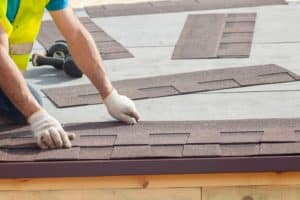
When professionals advise on how often to replace roofs, they always consider the type of roofing material. Today, there are five different types of common roofing materials that you will pick from.
1. Slate Roofing
Slate roofing is usually the most robust roofing material on the market. It can last anywhere from 75 to 100 years without significant damage. Slate is a strong material, but it does require a lengthy installation process since each tile goes onto the roof one at a time.
If you’re considering a slate roof replacement, make sure your home can handle the weight since slate is one of the heavier roofing materials. Slate roofing is also expensive, on top of possibly needing to refit your home. If you think it’ll cost more to replace your original roof, stick with a slate roof for the next 75 years at minimum.
2. Cedar Shake Roof
Unlike slate roofs, cedar shake roofs come primarily from wooden materials, which still last a long time but are not practically immortal, like slate roofs.
They also take less time to lay down than slate roofs since cedar shingles come in two-foot sections. You can choose the taper-sawn or hand-split looks, making your roof look more refined or more rugged.
When well-made, a cedar shake roof should last up to 30 years when well-made. Provided there are no major disasters and your roofing team uses top-notch materials, you might even get 50 years out of it.
That said, you probably won’t want a cedar shake roof if you live in an area with high humidity or extreme dryness. Either condition will cause the cedar tiles to age faster.
3. Composite Roof
If you want a roof that looks like either slate or cedar shake but don’t want to shell out too much money, a composite roof might be just right.
They’re a strong roofing option since they can withstand heavy impacts, like hail or heavy rain. Plus, they come from recycled materials, like plastic and rubber, allowing hail to bounce off them.
With that in mind, you can expect a great composite roof to last between 30 to 50 years.
4. Standing Seam Metal Roof
People consider metal roofs for many reasons, including that standing seam metal roofs look great and work in any climate. They come from seamed metal plates that contract with heat and cold, so they don’t age as fast as other roofing choices.
You can expect a typical standing seam metal roof to last for roughly 30 years if you care for it regularly.
5. Asphalt Roof
While it sounds like it should be the strongest roofing choice, asphalt has the shortest lifespan of roof replacements. They have great design, though, since they can either lay flat or have a dimensional look.
Asphalt comes in three types: luxury, architectural, and 3-tab. Each of these materials will last roughly 30 years.
How Do You Know If You Should Replace Your Roof?
When deciding how often to replace roofing materials, you will have some crucial questions. It’s very easy to call up your local roofing company to get an inspection for a potential new roof. In the meantime, you can look out for some general signs you need a new roof.
We also have a few roof maintenance tips to put off another roof replacement as long as possible.
Regularly Look for Internal and External Damage
Make a schedule and pick a day to check for internal and external damage on your roof. It’s an excellent idea to check for damage after a big storm.
You might even get a professional inspection every couple of years or after an especially harsh storm, just to be sure.
Keep Track of Your Roof Shingles’ Age
If you’ve had a roof replacement before, keep track of how long it’s been on your house. Know the typical lifetime of your roofing material and keep that year in mind for later.
Understand Your Roof’s Maintenance Needs
Besides checking for general damage, it’s a good idea to go through the following checklist for roof damage to determine how often to replace roofing and if it’s time for yours to receive that treatment.
Check Your Shingles
Take time to check your shingles to see if anything is out of place, cracked, or broken. This also means checking out your chimney for anything out of place. If you see any cracked or missing mortar, or if your chimney is leaning to one side, it might be good to have an inspection for foundational problems.
Check For Tree Hazards
If there are any low-hanging branches close to your roof, trim them or cut them entirely away. Doing so can also prevent leaves from getting into your gutters.
Clean Out Your Gutters
If leaves or debris congest your gutters, they can become heavy and drag on your roof, so keep them clear with mesh guards and regular cleaning.
Wash Off Your Roof
Certain roofing types can gather algae, so wash that away before it becomes a more significant problem. A mixture of water and bleach should do the trick.
Call a Professional
As always, when in doubt, contact a roofing professional. Our talented team can help you decide when it’s the best time to replace your roof.
Is It Time to Replace Your Roof?
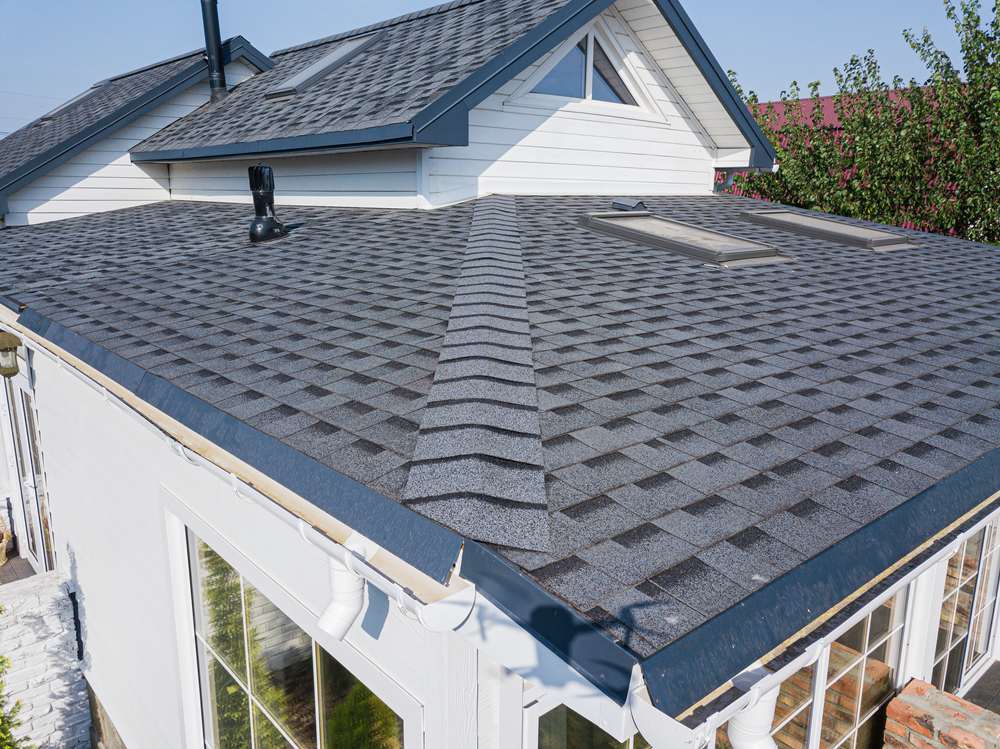
How often to replace a roof depends on your roofing materials, their age, and whether there is any external damage. Luckily, when to replace roofing materials can be a long time off with regular check-ups and professional inspections.
A to Z Construction covers all your roofing needs. If you need an inspection or a replacement, we can take care of you and your roof with no problem. Contact us today for a free roofing estimate for your replacement project.
8 Reasons to Consider Whether a Metal Roof Is Worth the Investment
When researching new and affordable roofing options for your home or replacing an existing one, thinking beyond the traditional asphalt may be worth it. Since many materials are available, metal roofing is becoming increasingly popular in the residential market.
Metal roofs are an attractive option because they are durable, energy efficient, and require minimal maintenance. This material gives your property a sleek, classy, and appealing look while being one of the most affordable and sturdy roofing systems available in the market today. Read on to learn about eight reasons why investing in a metal roof for your property is worthwhile.
What Is Metal Roofing?
Metal roofs are created with large sheets of tin, steel, copper, or aluminum and are the best alternative to the traditional asphalt roofing system. This type of roofing material is also available in hybrid metal mixtures that mimic the appearance of asphalt shingles.
Metal sheets for roofing are finished with a special coating capable of reflecting heat and preventing rust and other moisture damage. A roof built with metal can keep your home cooler in the summer season and boost the energy efficiency of the property.
Benefits of Metal Roofs
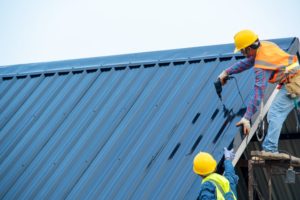
Here are a few of the benefits you can enjoy by investing in a metal roof.
1. Longevity
Metal panel roofs are highly durable and can last for many years. Metal panels remain protected from moss and fungal growth, unlike other roofing materials. Metal roofs are also resistant to pests like:
- Insects
- Birds
- Squirrels and rodents
- Bats
- Bees and wasps
With this roofing material, your home will be protected from severe damages that an asphalt shingle roof cannot provide. The overall cost of roof installation with metal panels can be higher than other systems, but its longevity and increased lifespan pay off throughout life.
2. Low Maintenance Costs
Unlike other roofing materials, metal panels are durable and resist moisture, meaning they require minimal maintenance and costs. Worrying about expensive repairs and maintenance is eliminated with a metal roof. Since they don’t collect snow, they are the best roofing system for snowy areas and in the winter season.
3. Energy Efficiency
As metal panels come with a special coating, they reflect the sun’s rays and heat to keep your home cooler in the summer season. As a result, you are less likely to use the air conditioner to maintain temperature. Proper insulation also protects metal roofs from excessive cooling and keeps your home warm to help reduce energy consumption.
4. Fire Protection
A metal roofing system is the most fire resistant due to its fireproof features. Metal roofs are less likely to catch fire during a natural disaster like a storm or wildfire. If your residential area is prone to thunderstorms or wildfires, a metal roof is the best option. A metal roof is less likely to catch fire or feed flame-like other traditional roofing systems. This roofing system adds additional safety layers to your personal property and your family from natural disasters.
5. Weather Resistant
Roofing material made of mater offers excellent protection from extreme weather conditions. Raindrops are likely to drain quickly on the metal roof, so there are no risks of leakage and moisture damage. Metal roofs protect your home from:
- Strong winds
- Hail
- Snow
- Ice
- Heavy rain
- And more
6. Environmentally Friendly
Metal panels are 100% recyclable and help reduce your carbon footprint that other roofing systems cannot. Most roofing material manufacturers even use almost 40% of recycled materials. According to research, metal roofing is an eco-friendly roofing option for both residential and commercial properties. Using recycled materials also increases the longevity of metal roofs to extend the lifespan of a metal roof. A good amount of money can also be earned by selling your outdated metal panels as scrap.
7. Increased Home Value
Installation costs of a metal roof can be higher, but it is effortless to justify the return on investment (ROI) as they can boost your home value from 2% to 6%. If you are about to move and want to sell your property after a quick renovation, you can consider installing a metal roof to increase the overall value of your property to sell it for an ideal amount.
Since metal panels are customizable, you can use them in any way to give your home an idea and appealing look. For instance, if you want your roof to compliment the overall design code of your home, you can buy metal panels in any color, design, or shape you want to curb the appeal of your home. Furthermore, you can also purchase metal roofs in different materials like zinc, copper, or aluminum with a high-quality finish and coating.
8. Affordability
No doubt, metal roofs are two or three times more expensive than other roofing systems, but they can save you money in the long run due to their longevity and minimal maintenance. Since the life of a metal roof is longer than other roofs, you can save a lot of bucks in terms of not replacing the roof anytime soon or spending money on expensive repairs and storm damage. As a result, you can enjoy the cost benefits with peace of mind.
Speak With an Expert About Metal Roofing Today
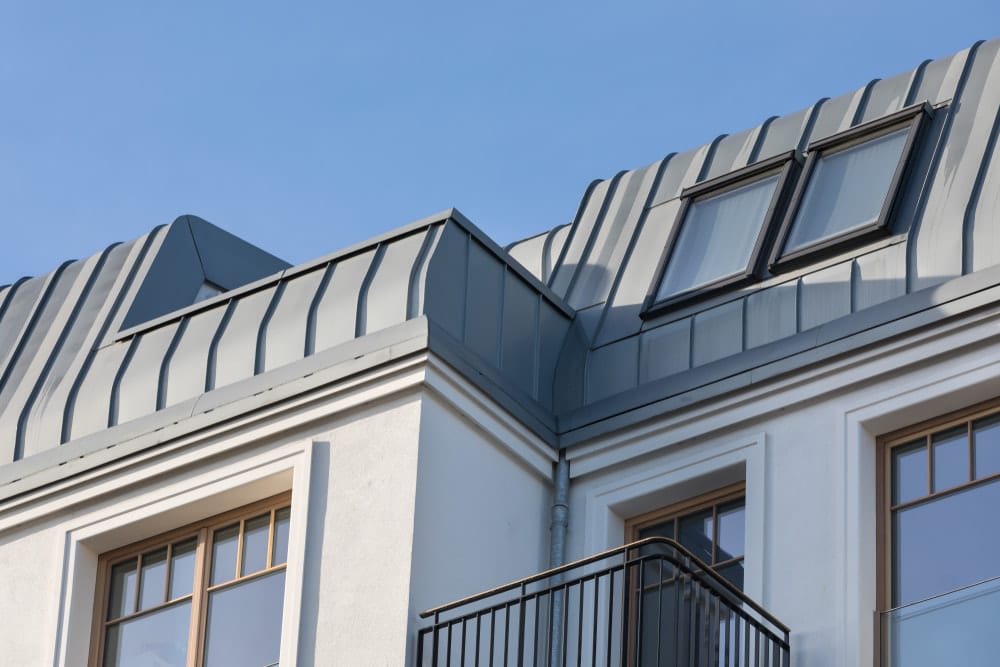
There are numerous reasons to choose metal roofs over other more traditional roofing materials. If you have decided to invest your hard-earned money in metal roofing, do your homework and do proper research to choose the right style, design, and color for your home. Spend enough time finding the best metal roofing contractors who are reliable and have years of experience in metal roof installation.
If you do so, you will end up with a metal roof that is about to protect your home, family, and other belongings for many years to come. Comparing available options is also a great idea to choose roofing materials and contractors worth investing in.
Contact A to Z Construction today to speak with one of our experts about metal roofing.
6 Signs It’s Time To Replace Your Roof
Buying a house is a monumental moment in a person’s life. When you purchase a home, you make a significant financial commitment and commit to putting down roots. You will no longer think about moving to a new apartment every year. Instead, you will be at your new house for several years, maybe even a lifetime.
However, more work goes into owning a house than you might think. Notably, most people do not think about what is over their heads, but it is essential. Unchecked, your roof could degrade in quality. As a result, you need to know the signs you need a new roof. Fortunately, we are here to educate you on the most common signs.
Water Damage in the Attic or Highest Floor
If there is water damage in your attic area or highest floor, that’s when you need to replace roof structures. Water damage at the upper end of your house is a sign your roof is no longer doing a great job of keeping the rain out of your home. Signs of water damage include moisture marks, brown, yellow, or gray stains, and paint peeling off the walls.
Furthermore, you should see if you have damp rafters or leaks. These are other signs your roof is damaged. However, it is crucial to note that not everyone can be a roofing expert. As a result, we recommend bringing in a roofing expert to do an inspection once a year. It will cost you some money upfront, but it could save you thousands of dollars in repairs.
Your Roof Is Sagging
If your roof is sagging, it is a sign you need a new roof. A roof sagging means moisture got trapped in the wood and rotted the boards under the roof. The result of this is the roof sagging away from its foundation. Replace a sagging roof immediately because it can sink further and cause more damage to your house’s structure.
A sagging roof is not as easy to spot as you might think. It is not as if it is sagging several feet, so you might not notice it immediately. You should check your roof for signs of trapped moisture. These can include rotting boards and sagging spots in the lowest sections of your roof.
Another thing you can do is see if you can see the sagging visually. Take several steps back from your house or even head to the other side of the street. Look at your home from several angles. The roof should appear straight at all angles. It should be easy to notice if your roof is sagging significantly.
Some Shingles Are Missing

Roofing shingles are in place to create a watertight, wind-resistant seal that protects the inside of your house from the elements. As a result, assessing the state of your shingles is a good way to see if your roof has damage beyond repair. You can replace a few damaged or missing shingles, but several missing shingles can be signs you need a new roof.
If you notice your shingles start to curl, it is a sign they are no longer properly attached to the roof. As a result, they have sustained damage and are no longer effective. Strong winds and storms can cause your shingles to curl. You can speak to a roofing consultant to see if they think they can repair it or if it is time for a new roof.
Another thing to do is check your gutters and downspouts for shingle granules. If you notice several granules, it is a sign that your shingles are degrading. Even if they are flat and no shingles are missing, lots of granules in your gutter is a sign you need a new roof, as your current roof is nearing the end of its life.
Your Heating and Cooling Bills Are Increasing
Bills are expensive, but they are a regular part of life. You should know how much you pay monthly for your insurance, internet, and utilities. While utility costs vary monthly, there should not be a drastic shift. As a result, if you notice a drastic increase in your energy costs, it is a sign you need a new roof.
A damaged roof will no longer insulate your roof as well as it did in peak condition. As a result, it takes more energy to heat or cool your house, and your energy bill will increase.
Moss and Mold Have Started To Grow
Moss, mold, and other sometimes dangerous fungi start to grow in moist areas. As a result, if you notice mold or moss growing in your attic near the roof, it is a sign of excess moisture. As we have mentioned, moisture in your attic is a sign your roof is no longer doing an adequate job of protecting your house from the elements.
If you notice mold, you can try to wipe it away with a stiff brush. If the mold is in its early stages, that should do the trick. However, if it has grown significantly, you may need to contact a professional for assistance.
Your Roof Has Outlived Its Lifespan
Roofs do not last forever. Unfortunately, everything will eventually degrade, so there will come a time when you need to replace your roof if you plan on living in your house your whole life. There are three common types of roofs available to the everyday consumer, such as:
- Asphalt shingles
- Metal
- Clay tiles
Roofs with asphalt shingles usually last 10 to 20 years. Metal roofs can last 30 to 50 years, depending on the elements in your area. Finally, types of roofs with clay tiles last around 40 years.
Replace Your Roof Today
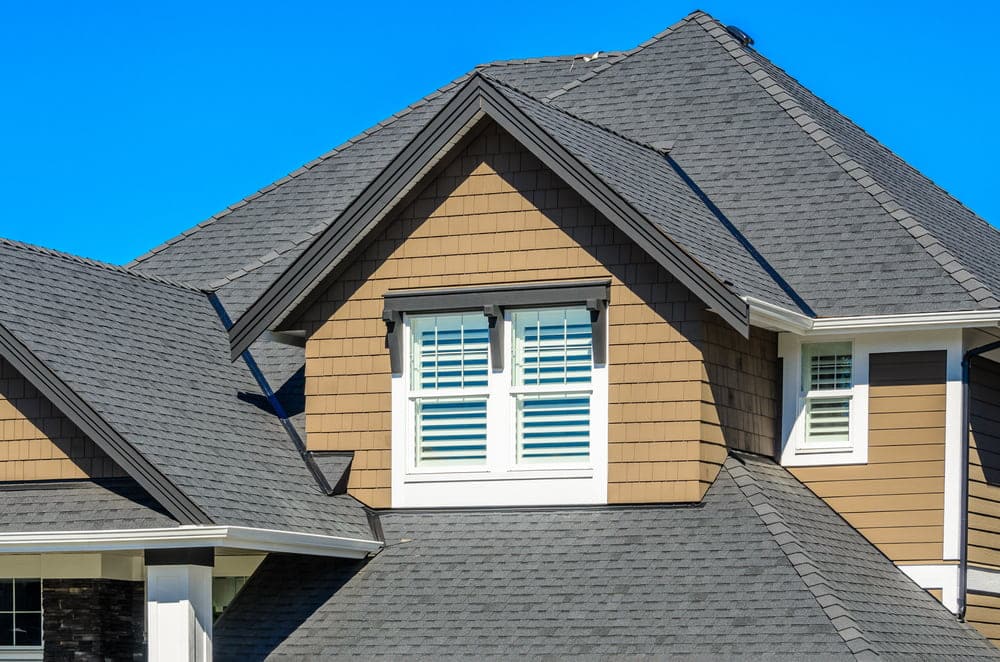
Your roof is one of the most fundamental pieces of your house. Without it, you are not protected from the elements. As a result, it is crucial to know the signs you need a new roof.
You can stay safe and secure if you keep an eye out for the six signs outlined above. Contact the roofing experts at A to Z Construction today to speak with an expert.


